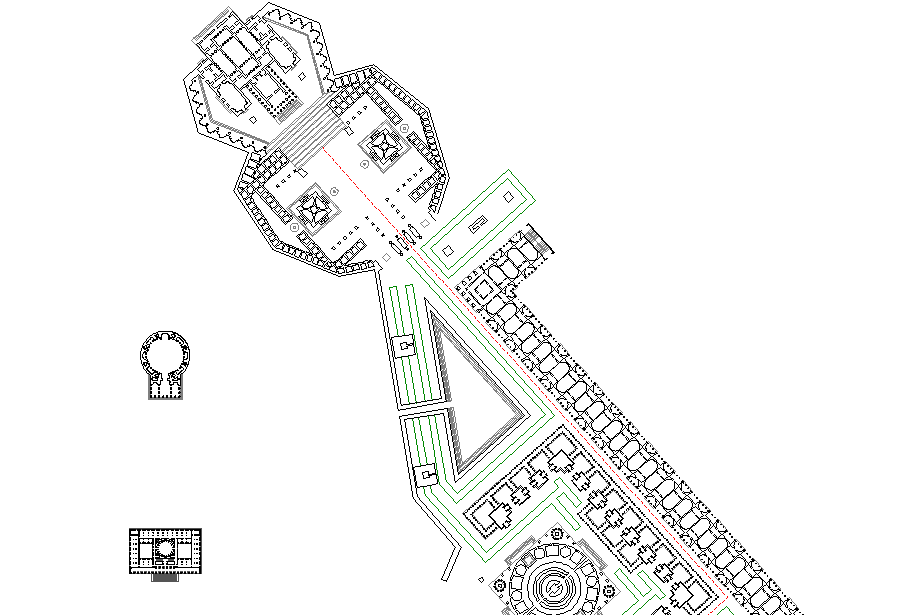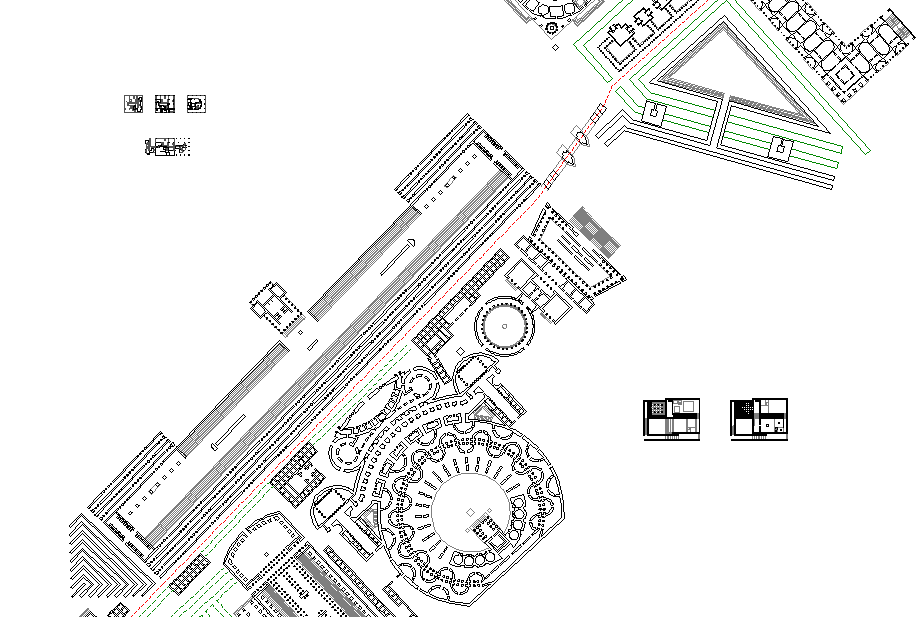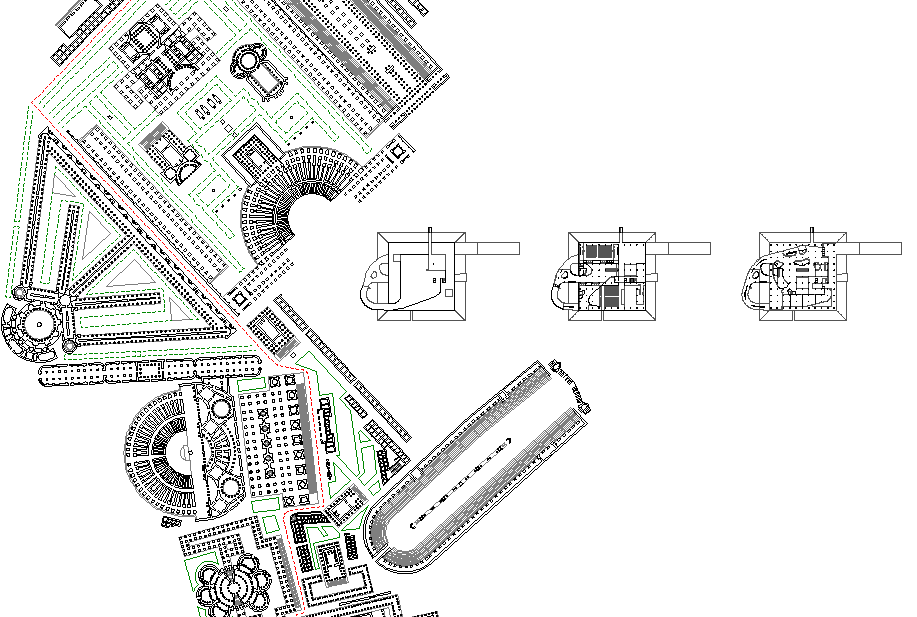Triumphal Way
within the Ichnographia Campus Martius
Pantheon
Altes Museum
Villa Savoye
Danteum
Palais des Congrès
Wallraf-Richartz Museum
| |
   
110512.db
| |
1997.08.05
architectural promenade
...the new ideas re: the architectural promenade that developed because of the Danteum. Essentially, the Danteum has the same sequential series of architectural "events" as the formula for the architectural promenade that I have extracted from Le Corbusier and Stirling. The Danteum, however, adds the element of a journey from the profane to the sacred, and this addition significantly opens up the interpretive field and the buildings that can now be included as exhibiting the architectural promenade formula.
With regard to the profane/scared aspect, the triumphal way within Piranesi's Campo Marzio exhibits the same sequence. The procession (promenade) begins at the Templum Jani, a tetrahedron, which is the forest, the pilotis that raise the box. From there the route jaggedly marches through the "theater district" (downtown)--this is hell, the profane, the lower level. Just as the "way" approaches the Banks of the Tiber for the first time, the procession becomes straight and passes repetitive / monotonous buildings. The way remains perfectly straight except for two 90 degree turns, and this course comprises the greatest length of the promenade. (The straight portion of the procession passes, in sequential order, the Hecatonstylon and the outer niched wall of the Horti prius Pompejani deim Marci Antonii; then the long portico of the Stadium opposite the Domus Alexandri Severi; and across the river between the Porticus Hadriani and the Sepulchrum Libertorum et Servorum of the Bustum Hadriani. These buildings well exemplify the notion of inside/outside, thus tying the triumphal way more closely to the architectural promenade formula.) In the course of this long march, the procession crosses over from the area (of the Campo Marzio) that primarily represents life (inside/outside -- osmosis connection?) into the area that is primarily of death (the Bustum Hadriani). This is the same transition as in the Danteum's Purgatory, and the middle inside/outside level of the Villa Savoye (etc.). Ultimately, the Triumphal way ends at the Templum Martis, easily the most sacred place/space of the Campo Marzio. This culmination to the triumphal procession is analogous to the Paradiso of the Danteum, and to the solarium of the Villa Savoye (etc.). Of course, this has major implications towards my previous analysis of the Triumphal Way.
What is most interesting about this new discovery of the architectural promenade in the Campo Marzio is that it predates Le Corbusier, and this is what led me to wonder if the formula can be found in Dante's Divine Comedy. Piranesi's example is not the only pre-Corbusian example I have found, however.
A good portion of the architectural promenade formula can also be found in the entry sequence of Schinkel's Altes Museum. The facade/colonnade is the forest, and again the pilotis holding up the box. The dark portal under the stairs is the journey into hell. The ascension of the stairs is the inside/outside experience of purgatory, the middle level. And the museum's central pantheon is paradise, heaven, and the solarium. This interpretation of the Altes Museum, furthermore, sheds new light on Stirling's Düsseldorf and Stuttgart museums.
Finally, the oldest example of the architectural promenade I have found thus far is the Pantheon in Rome itself. It is a very compacted version of the forest, hell, purgatory (inside/outside), and paradise.
|